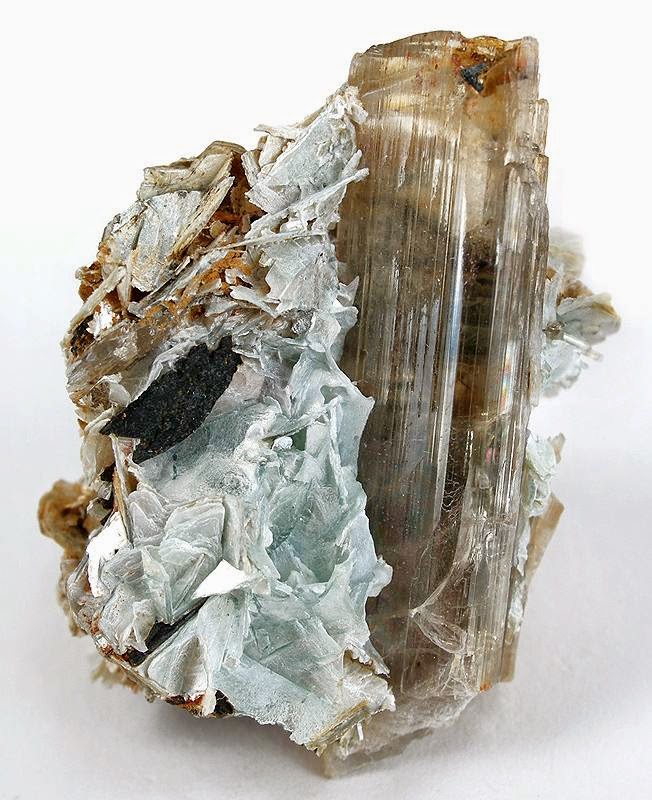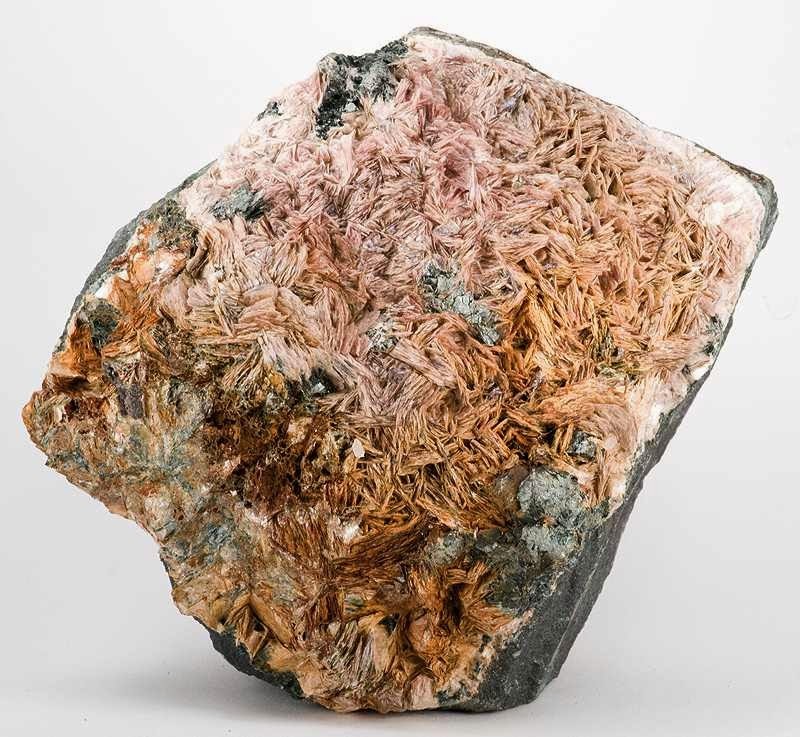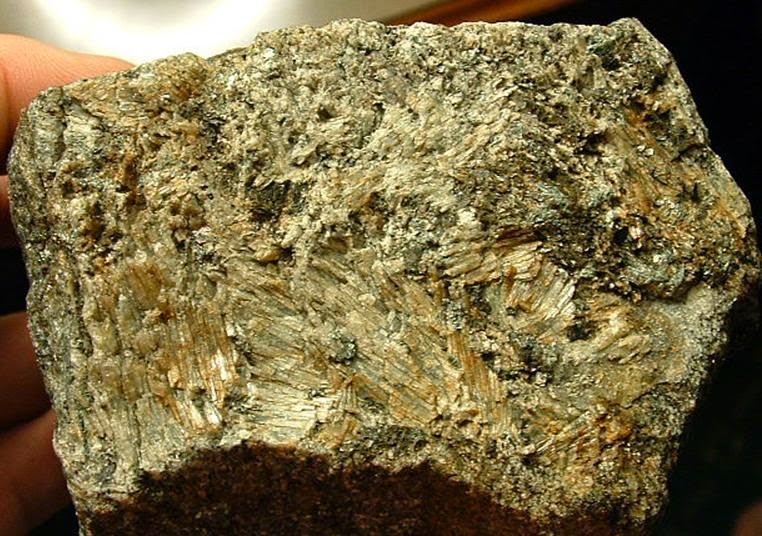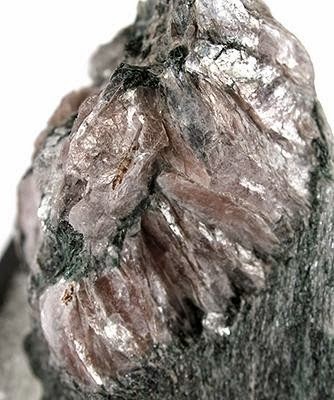
Chemical Formula: CaAl2(Al2Si2O10)(OH)2
Locality: Corundum mines at Ekaterinurg Distict, Ural Mountains, Russia.
Name Origin: From the Greek margaritos – “pearl.”
Margarite is a calcium rich member of the mica group of the phyllosilicates with formula: CaAl2(Al2Si2O10)(OH)2. It forms white to pinkish or yellowish gray masses or thin laminae. It crystallizes in the monoclinic crystal system. It typically has a specific gravity of around 3 and a Mohs hardness of 4. It is translucent with perfect 010 cleavage and exhibits crystal twinning.
It occurs commonly as an alteration product of corundum, andalusite and other aluminous minerals. It has been reported as forming alteration pseudomorphs of chiastolite along with muscovite and paragonite. The margarite in this occurrence forms preferentially along the dark graphite rich inclusions with the chiastolite crystals.
History
Discovery date : 1823
Town of Origin: MT. GREINER, STERZING, TYROL
Country of Origin : AUTRICHE
Optical properties
Optical and misc. Properties : Translucent to subtranslucent
Refractive Index: from 1,63 to 1,65
Axial angle 2V : 40-67°
Physical Properties
Cleavage: {001} Good
Color: White, Gray, Pinkish gray, Yellowish gray.
Density: 2.99 – 3.08, Average = 3.03
Diaphaneity: Translucent to subtranslucent
Fracture: Brittle – Generally displayed by glasses and most non-metallic minerals.
Hardness: 4 – Fluorite
Luminescence: Fluorescent, Short UV=sky blue, Long UV=strong sky blue.
Luster: Pearly
Streak: white
Photo:













